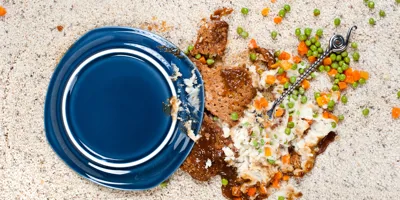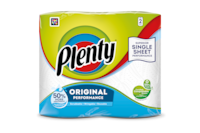20 people found this helpful

It’s caked with spatterings of fat; clogged with settled grease; sprinkled with an extra helping of dust and microscopic grime from the air. It’s one of the most hardworking parts of the kitchen, but often gets neglected. But knowing how to clean cooker hood surfaces can make a big difference to your kitchen aesthetic.
Learning how to clean extractor fan hood parts improves overall hygiene, too, as a clean cooker hood helps you get rid of grease, grime and even bacteria. Here’s how to clean cooker hood filters, surfaces and blades.
How to clean an extractor fan filter
They’re the main ‘catchers’ of kitchen grime, – the superhero of the extractor, if you will – so it’s really important to know how to clean extractor fan filters. That way you can help prevent the build-up of gunk, nasty smells and bacteria. Here’s how to clean an extractor fan filter:
-

-

-
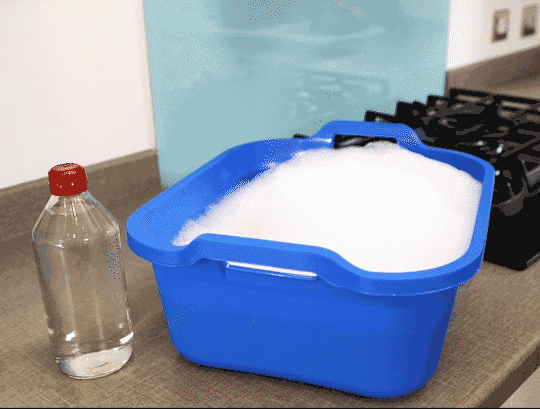
-

-

-

-

It’s a good idea to make this part of your weekly or biweekly household cleaning schedule, so it’s easy to keep on top of all that sticky grime.
How to clean cooker hood surfaces
Although figuring out how to clean extractor fan hood filters is the most important task, the surfaces need a good clean too. Sure, the casing might not get as grimy as the filters, but it’ll still pick up its fair share of grease, dust and dirty bits and bobs. Here’s how to clean extractor fan kitchen hood surfaces:
- Just as you did when cleaning cooker hood filters, put on your rubber gloves.
- You’ll also need a soft sponge and some soapy water – and possibly good old bicarbonate of soda and white vinegar, too.
- To get a clean cooker hood, wipe the surfaces with your sponge. Be careful not to scrub hard, though, as you don’t want to scratch the metal – hence the soft sponge.
- If the combination of a soft sponge and soapy water doesn’t work, you can scrub gently with the vinegar and bicarb paste.
- Give the surface a good wipe down with kitchen paper to dry it and get rid of any leftover cleaning residue.
Tip
You’ll want something that’s super absorbent and strong enough not to break down for this cleaning task. Step forward, Plenty Flexisheets!
How to clean extractor fan blades
Finally, the fan blades. This is a task you won’t need to do as regularly as the surfaces and filters, but blades still need occasional attention. Here’s how to clean extractor fan kitchen blades:
- Make sure the extractor fan is turned off… whenever you’re cleaning it.
- Remove the blades if you can, or make sure you can reach them comfortably. If you can’t, you might have to call for some assistance. Teamwork makes the dream work.
- Gently wipe the blades with a damp sheet of Plenty kitchen paper. Wring it out before wiping so that it’s not soaking wet.
- Wipe down and dry thoroughly.
Tips for keeping a clean extractor filter and hood
Regular cleaning is good practice when it comes to cooker hoods and filters, but there are a number of things you can to make the job easier… and reduce the need to do it so frequently:
- When you clean the filters, do so thoroughly. They’ll just clog up more quickly otherwise.
- Leave the extractor fan going after cooking. This’ll help blast the grease and odours through, rather than letting them cling to the filters.
- Use the most powerful setting when you’re cooking with food that can produce a lot of grease. Again, this will allow the extractor fan to work efficiently, sucking the particles through, rather than just onto the filters.
Now that you’ve got a better idea about how to clean cooker hood filters, surfaces and blades you can look forward to more efficient extraction to help you out through even the smokiest kitchen catastrophes.
Related articles
How to clean aluminium in 5 ways
Find out how to polish aluminium at home, with tips on cleaning aluminium pans, sinks and outdoor surfaces, and more. It’s time to sparkle!

How to descale and deep clean your trusty coffee machine
Read on for a quick and simple way of descaling the coffee machine with vinegar, as well as instructions on how to clean a coffee maker without vinegar.

How to clean stainless steel — without streaks, smudges, or scratches
Learn how to clean stainless steel with these easy-to-follow step-by-step instructions, including what cleaning supplies to use when washing stainless steel.

How to clean the hob that’s under a layer of burnt food
Click to discover how to clean a stainless-steel hob, plus electric and induction hobs – including top tips for cleaning cooker hob plates.
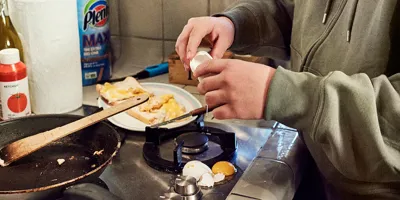
How to remove limescale around the house — gently
Want to know how to get rid of limescale gently? Discover two brilliant yet natural ways to remove limescale from taps, toilets and sinks here.
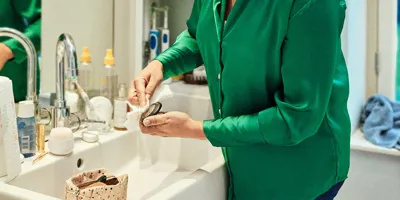
Xmess accidents: how to get grease stains out of carpets
Festive mess (or Xmess as we like to call it!) is inevitable - so if you have a grease stain from a mistle-toast mishap, use our simple guide to learn how to sort it.
